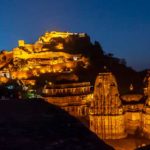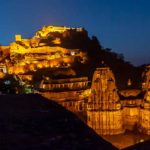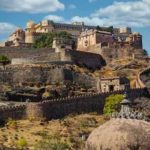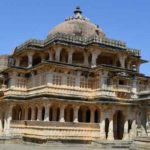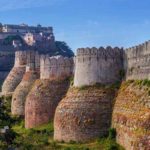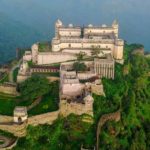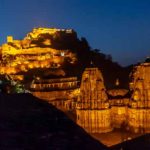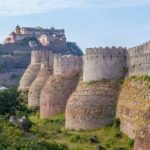Kumbhalgarh Travel Information is a historic fortress and a popular tourist destination located in the Rajsamand district of the Indian state of Rajasthan. The fort is situated on the Aravalli hills and is surrounded by a stunning wildlife sanctuary. Kumbhalgarh is known for its rich cultural heritage, majestic architecture, and breathtaking views, making it a must-visit place for travelers.
The main attraction Kumbhalgarh is the Kumbhalgarh Fort, which was built in the 15th century by Maharana Kumbha. The fort is famous for its massive walls, which are considered to be the second longest continuous wall after the Great Wall of China. These walls stretch over 36 kilometers and enclose the fort complex, which consists of palaces, temples, and other structures. The fort offers a glimpse into the grandeur and opulence of the Rajput era.
Apart from the fort, Kumbhalgarh is also home to the Kumbhalgarh Wildlife Sanctuary, which spans over 600 square kilometers. The sanctuary is a haven for wildlife enthusiasts and nature lovers. It is home to a variety of species, including leopards, sloth bears, wolves, hyenas, and a wide range of bird species. Visitors can enjoy jeep safaris and nature walks to explore the sanctuary and witness its diverse flora and fauna.
Another major attraction in Kumbhalgarh is the Badal Mahal, also known as the Palace of Clouds. This beautiful palace is located within the fort complex and offers panoramic views of the surrounding countryside. It is an architectural marvel adorned with intricate carvings and delicate frescoes.
Kumbhalgarh also boasts several ancient temples, such as the Neelkanth Mahadev Temple, Vedi Temple, and Parsva Natha Temple. These temples are revered by locals and attract devotees throughout the year. The temples showcase stunning architectural styles and intricate artwork.
For adventure enthusiasts, Kumbhalgarh offers opportunities for trekking and hiking in the surrounding hills. The picturesque landscapes and serene atmosphere make it an ideal destination for outdoor activities.
In conclusion, Kumbhalgarh is a treasure trove of history, culture, and natural beauty. With its magnificent fort, wildlife sanctuary, ancient temples, and stunning landscapes, it offers a unique and enriching experience for tourists. Whether you are a history buff, a wildlife enthusiast, or a nature lover, Kumbhalgarh Tour has something to offer to everyone.
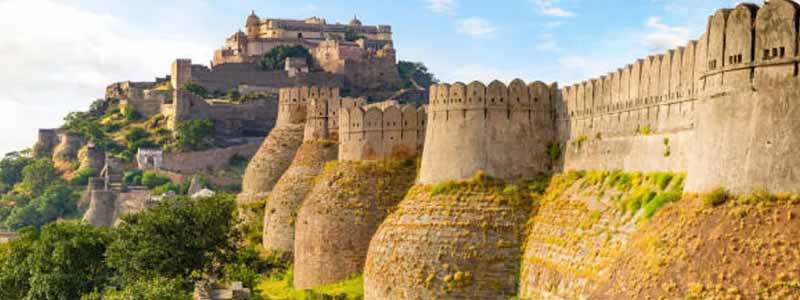
History of Kumbhalgarh
Kumbhalgarh has a rich and fascinating history that dates back several centuries. The fort and its surrounding region have been witness to numerous dynasties, battles, and cultural developments throughout the years.
The construction of Kumbhalgarh Fort was initiated by Maharana Kumbha, the ruler of Mewar, in the 15th century. Maharana Kumbha was a renowned Rajput king and a patron of art, architecture, and literature. The fort was built as a strategic stronghold to protect the kingdom of Mewar from invasions by rival kingdoms, including the Mughals.
The construction of Kumbhalgarh Fort took several years to complete and involved the efforts of skilled architects and craftsmen. The fort’s location on the Aravalli hills provided a natural advantage, making it a formidable defensive structure. The massive walls of the fort, extending over 36 kilometers, were built using large limestone blocks and were designed to withstand attacks from enemies.
Over the years, the fort underwent several expansions and renovations under different rulers of Mewar. It served as a refuge for the rulers during times of conflict and played a crucial role in defending the region against foreign invasions. The fort’s defenses were so formidable that it was never captured by any external force.
Kumbhalgarh Tourism also played a significant role during the reign of Rana Udai Singh, the father of Maharana Pratap. When Chittorgarh, the capital of Mewar, was attacked and captured by the Mughals, Rana Udai Singh took refuge in Kumbhalgarh and established it as his temporary capital. It was here that Maharana Pratap was born and raised.
Apart from its military significance, Kumbhalgarh has also been a center of art and culture. The palaces within the fort complex, such as the Badal Mahal, were adorned with exquisite carvings and frescoes, showcasing the artistic brilliance of the era. The temples within and around the fort, dedicated to various deities, have also been important religious sites for centuries.
Today, Kumbhalgarh stands as a testament to the glorious history of the Rajput dynasty and serves as a major tourist attraction. Its awe-inspiring architecture, stunning landscapes, and rich cultural heritage continue to mesmerize visitors from around the world, offering a glimpse into the grandeur of Rajasthan’s past Kumbhalgarh Travel Information.
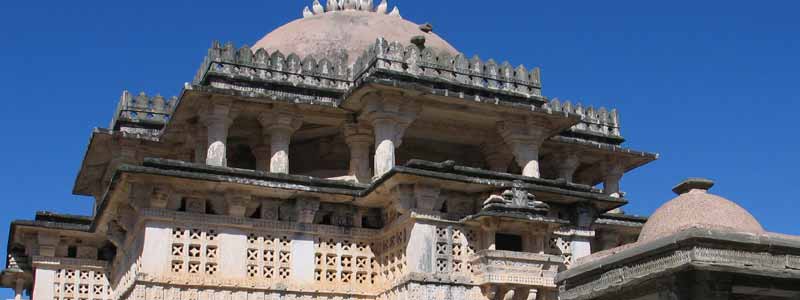
Places to Visit in Kumbhalgarh
Kumbhalgarh offers a variety of attractions and places to visit that cater to different interests. Here are some of the must-visit places in Kumbhalgarh:
Kumbhalgarh Fort: The iconic Kumbhalgarh Fort is the main highlight of the region. Explore the massive fort complex, walk along the extensive walls, and visit its palaces, temples, and other architectural wonders. The Badal Mahal (Palace of Clouds) within the fort offers stunning views of the surrounding landscapes.
Kumbhalgarh Wildlife Sanctuary: Nature lovers should not miss a visit to the Kumbhalgarh Wildlife Sanctuary. Embark on a jeep safari or a nature walk to witness a diverse range of wildlife, including leopards, sloth bears, wolves, and various bird species. The sanctuary is also home to several ancient temples.
Neelkanth Mahadev Temple: Situated within the fort complex, the Neelkanth Mahadev Temple is an ancient and revered Hindu temple. Dedicated to Lord Shiva, it showcases intricate carvings and offers a serene spiritual ambiance.
Vedi Temple: Another significant temple in Kumbhalgarh is the Vedi Temple, which is dedicated to Lord Shiva. It features elaborate architecture and is adorned with beautiful sculptures and carvings.
Parsva Natha Temple: This Jain temple, located in the Kumbhalgarh town, is dedicated to Lord Parsva Natha, the 23rd Tirthankara of Jainism. The temple exhibits exquisite marble work and is a sacred site for Jain devotees.
Haldi Ghati: Located near Kumbhalgarh, Haldi Ghati is a historical site known for the famous Battle of Haldi Ghati fought between Rana Pratap Singh of Mewar and the Mughal army. Explore the museum and memorial dedicated to Maharana Pratap and learn about the historical significance of the region.
Muchchal Mahavir Temple: Situated around 5 kilometers from Kumbhalgarh, Muchchal Mahavir Temple is renowned for its unique statue of Lord Mahavir with mustaches. The temple attracts devotees and curious visitors alike.
Mammadev Temple: Located on the outskirts of Kumbhalgarh, the Mammadev Temple is an ancient shrine dedicated to Lord Shiva. It offers a peaceful ambiance and picturesque surroundings.
Kumbhalgarh Wildlife Conservation Centre: This center focuses on the conservation and rehabilitation of wildlife in the region. Visitors can learn about the efforts being made to protect and preserve the biodiversity of Kumbhalgarh.
These are just a few of the many attractions that Kumbhalgarh has to offer. The region is rich in history, culture, and natural beauty, making it a captivating destination for travelers.
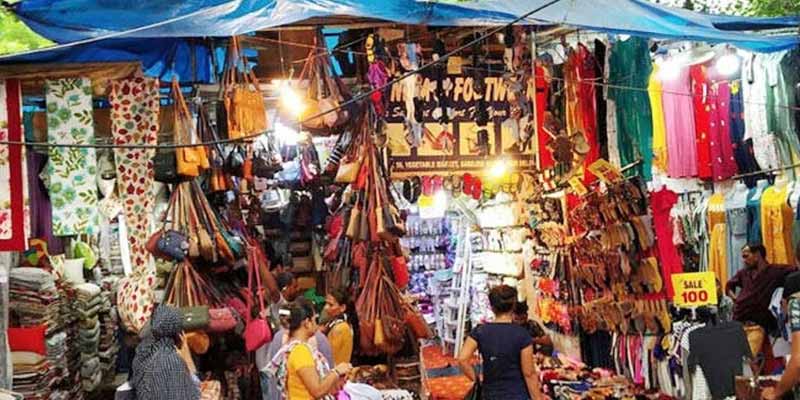
Famous Shopping Markets in Kumbhalgarh
Kumbhalgarh is primarily known for its historical significance and natural beauty rather than being a major shopping destination. However, there are a few local markets and shops where you can find unique handicrafts, souvenirs, and traditional Rajasthani items. Here are some places to explore for shopping in and around Kumbhalgarh:
Kumbhalgarh Bazaar: Located near the Kumbhalgarh Fort, this small local market offers a variety of Rajasthani handicrafts, traditional clothing, jewelry, and souvenirs. You can find items like textiles, embroidered fabrics, leather goods, camel leather products, pottery, and miniature paintings.
Rajsamand: Situated about 30 kilometers from Kumbhalgarh, Rajsamand is a larger town that offers more options for shopping. The local market in Rajsamand is known for its handicrafts, textiles, and jewelry. You can explore the market to find colorful Rajasthani fabrics, bandhani (tie-dye) garments, silver jewelry, and wooden handicrafts Kumbhalgarh Travel Information.
Shilpgram Crafts Fair: If you happen to visit Kumbhalgarh during the Shilpgram Crafts Fair, you can explore a diverse range of crafts and traditional art forms from Rajasthan. The fair is usually held in Udaipur, showcasing the craftsmanship of local artisans, including textiles, pottery, woodwork, and more.
While shopping in Kumbhalgarh may not be as extensive as in some larger cities, these markets and nearby destinations provide opportunities to purchase unique Rajasthani handicrafts and souvenirs. Remember to bargain and negotiate prices when shopping in local markets to ensure a fair deal.
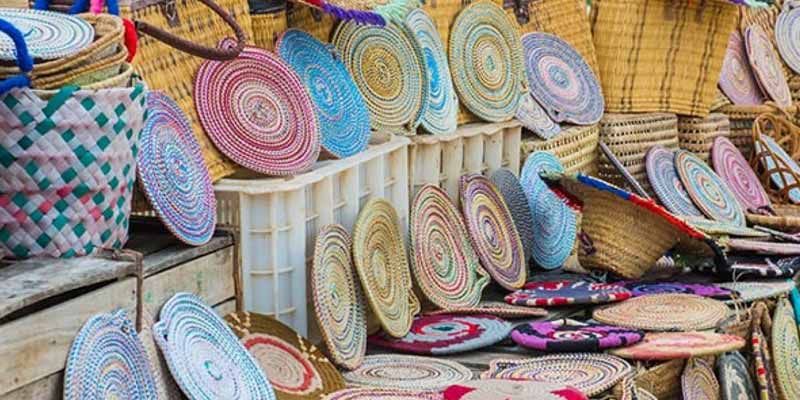
Festivals of Kumbhalgarh
Kumbhalgarh, located in the vibrant state of Rajasthan, celebrates various festivals throughout the year. These festivals showcase the rich cultural heritage and traditions of the region. Here are some of the prominent festivals celebrated in and around Kumbhalgarh:
Mewar Festival: Celebrated in the city of Udaipur, which is close to Kumbhalgarh, the Mewar Festival is one of the most significant festivals in the region. It marks the arrival of spring and is dedicated to Goddess Parvati. The festival features colorful processions, cultural performances, folk music, dance, and a grand display of fireworks. Locals adorn themselves in traditional attire and participate in various rituals and ceremonies.
Shilpgram Crafts Fair: Held annually in Udaipur, the Shilpgram Crafts Fair showcases the rich artistic heritage of Rajasthan. The fair brings together artisans and craftsmen from different parts of the state, offering visitors an opportunity to witness and purchase a wide range of traditional handicrafts, textiles, pottery, and more. Cultural performances, folk dances, and music are also part of the festivities.
Kumbhalgarh Festival: This festival is celebrated within the premises of the majestic Kumbhalgarh Fort itself. Organized by the Rajasthan Tourism Department, the festival highlights the grandeur and cultural richness of the region. The event includes various cultural performances, traditional music, dance forms like Ghoomar and Kalbelia, puppet shows, and a spectacular sound and light show against the backdrop of the fort.
Gangaur Festival: Gangaur is a traditional women-centric festival celebrated with great enthusiasm in Rajasthan, including Kumbhalgarh. The festival honors the goddess Gauri, who represents marital bliss and fertility. Women dress in their finest traditional attire, carry idols of Gauri in beautifully decorated processions, and offer prayers. The festival includes rituals, singing, dancing, and cultural performances.
Teej Festival: Teej is a monsoon festival celebrated by women in Rajasthan. It is dedicated to the goddess Parvati and symbolizes the reunion of Lord Shiva and Goddess Parvati. Women fast, dress in colorful attire, and participate in swings adorned with flowers. They sing traditional songs, perform dances, and enjoy various cultural activities.
Diwali: Diwali, the festival of lights, is celebrated with great fervor in Kumbhalgarh and throughout Rajasthan. Homes and streets are illuminated with earthen lamps and colorful lights. People burst fireworks, exchange gifts, offer prayers, and enjoy feasts with family and friends. The festival signifies the triumph of light over darkness and good over evil Kumbhalgarh Travel Information.
These festivals provide a glimpse into the vibrant culture and traditions of Kumbhalgarh and its surrounding region. They offer visitors a chance to immerse themselves in the joyful celebrations, witness traditional rituals, and experience the warmth and hospitality of the local people.
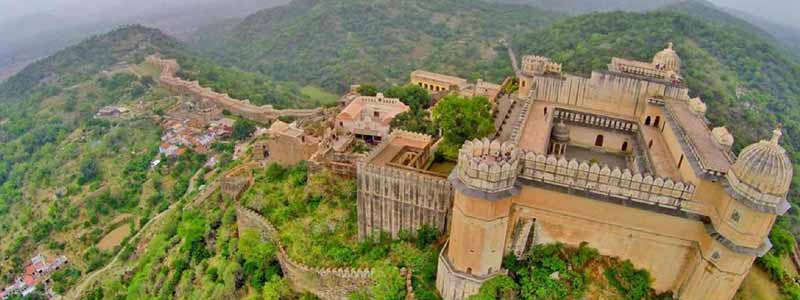
Best Time to Visit Kumbhalgarh
The best time to visit Kumbhalgarh is during the winter season, which spans from October to March. The weather during these months is pleasant and ideal for exploring the historical sites, wildlife sanctuary, and engaging in outdoor activities. Here’s a breakdown of the seasons and what to expect:
Winter (October to March): Winter is considered the peak tourist season in Kumbhalgarh. The temperature ranges from 10°C to 25°C (50°F to 77°F) during the day, making it comfortable for sightseeing and outdoor activities. The weather is relatively dry with clear skies, making it perfect for exploring the Kumbhalgarh Fort, wildlife sanctuary, and enjoying nature walks. It is advisable to carry some warm clothing, especially during the evenings and nights.
Summer (April to June): Summer in Kumbhalgarh is hot and dry, with temperatures ranging from 25°C to 40°C (77°F to 104°F) or even higher. The scorching heat makes it less favorable for outdoor activities, but if you don’t mind the heat, you can still visit during this time. Make sure to carry light and breathable clothing, sunscreen, and stay hydrated.
Monsoon (July to September): Kumbhalgarh receives moderate to heavy rainfall during the monsoon season. The region becomes lush green, and the surrounding landscapes look mesmerizing. However, the rains can sometimes disrupt travel plans, and certain activities like wildlife safaris may be restricted. If you enjoy the monsoon ambiance and don’t mind occasional showers, you can visit during this time. Just be prepared for potential rainfall and check weather conditions before your trip.
Considering the pleasant weather and comfortable temperatures, the winter season remains the most popular time to visit Kumbhalgarh. It allows you to explore the fort, enjoy outdoor activities, and experience the region’s rich heritage and natural beauty to the fullest Kumbhalgarh Travel Information.
How to Reach Kumbhalgarh
Kumbhalgarh is well-connected to major cities in Rajasthan and other parts of India. Here are the various transportation options to reach Kumbhalgarh:
By Air: The nearest airport to Kumbhalgarh is Maharana Pratap Airport in Udaipur, located approximately 90 kilometers away. The airport has regular domestic flights connecting Udaipur to major cities like Delhi, Mumbai, Jaipur, and Ahmedabad. From the airport, you can hire a taxi or take a bus to reach Kumbhalgarh.
By Train: The nearest railway station to Kumbhalgarh is Falna Railway Station, located around 80 kilometers away. Falna is well-connected to major cities like Delhi, Mumbai, Jaipur, Ahmedabad, and Jodhpur. From Falna, you can hire a taxi or take a bus to reach Kumbhalgarh.
By Road: Kumbhalgarh is well-connected to nearby cities and towns through a network of roads. You can reach Kumbhalgarh by private car, taxi, or bus from cities like Udaipur (90 km), Jodhpur (200 km), Ahmedabad (320 km), and Jaipur (350 km). The roads leading to Kumbhalgarh Car Rental are generally in good condition, providing a scenic drive through the Aravalli hills.
Local Transportation: Once you reach Kumbhalgarh, you can explore the area using local transportation options. Auto-rickshaws and taxis are available for short distances or local sightseeing. However, it is advisable to negotiate fares beforehand or use metered taxis for a fair price.
It is recommended to plan your transportation in advance and check the availability of flights, trains, or buses based on your point of origin. Additionally, it’s a good idea to keep some buffer time in case of delays or traffic congestion, especially if you are traveling by road Kumbhalgarh Travel Information.

